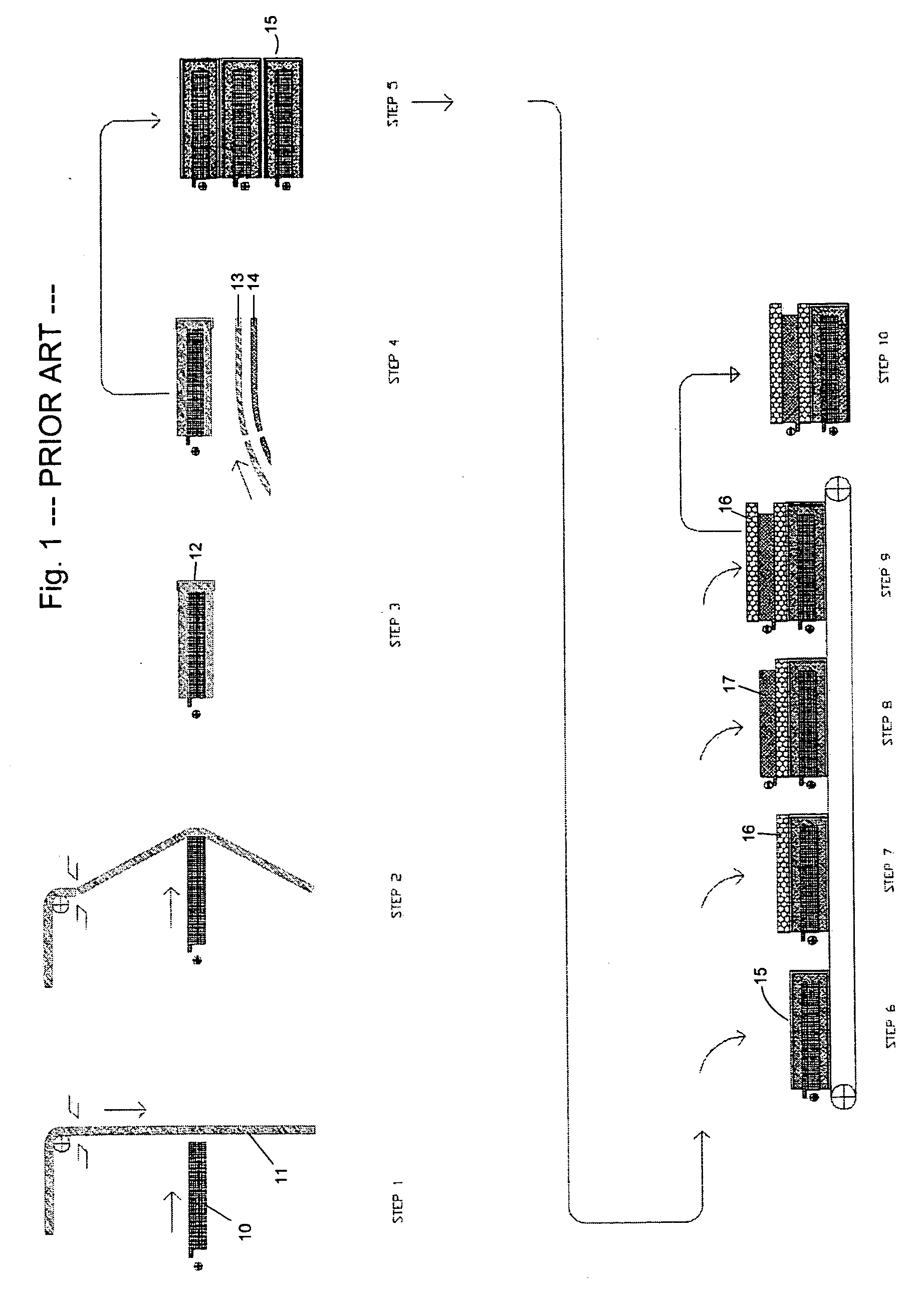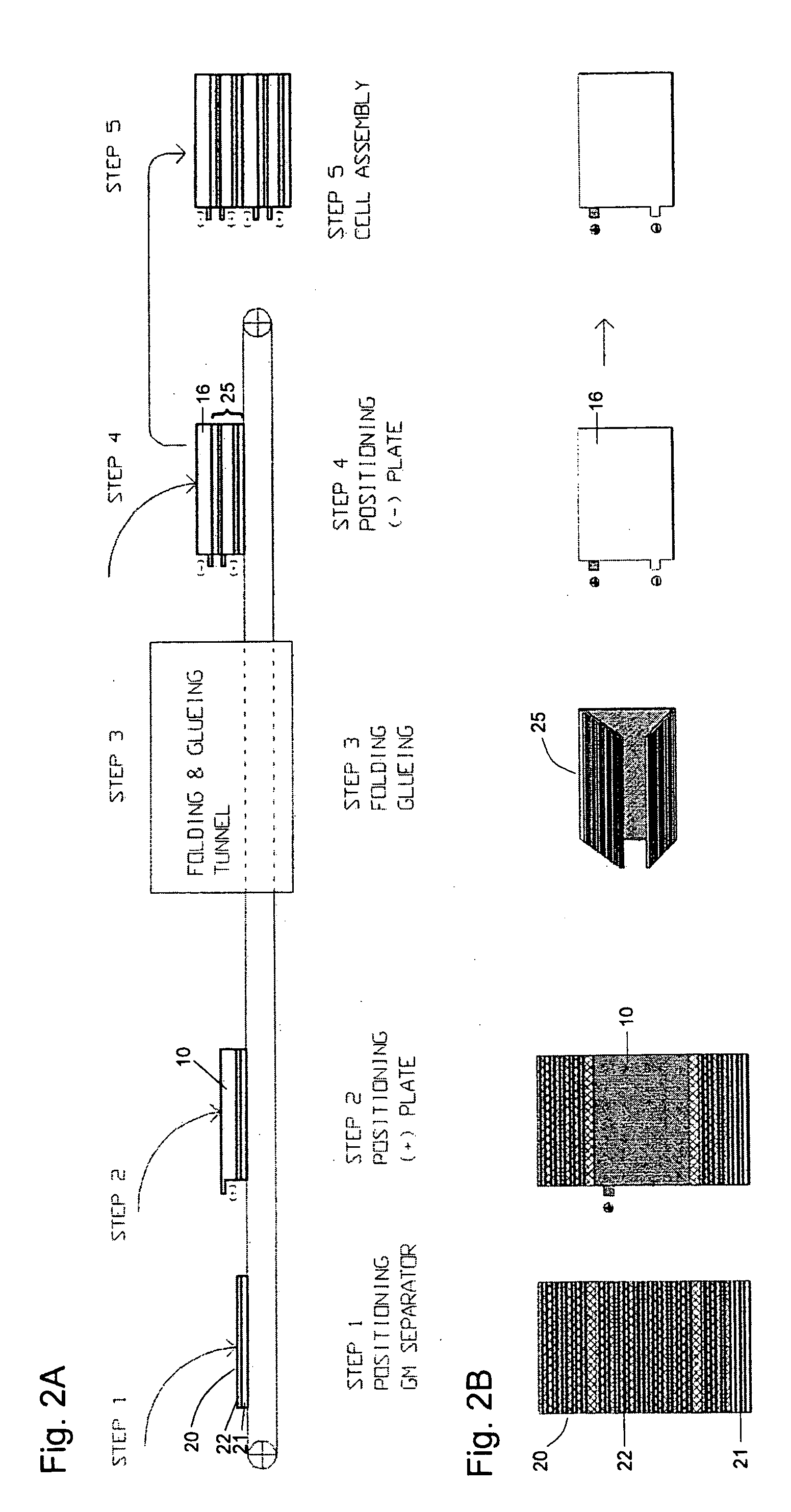Process for manufacturing plate electrode stackings
- Summary
- Abstract
- Description
- Claims
- Application Information
AI Technical Summary
Benefits of technology
Problems solved by technology
Method used
Image
Examples
Embodiment Construction
[0042] The abovementioned and further objects of the present invention will be more apparent from the following description of a not limiting embodiment with reference to the attached drawings.
[0043] In FIG. 1, which represents a prior art process for the manufacture of electrode plate stackings, the positive plates 10 are placed onto an assembly belt.
[0044] In step 1, the Hydramatic 11 is unrolled vertically and taken by the advancing plates 10 in the middle. The Hydramatic 11 is cut to size and U-wrapped around the plate 10 in step 2. In step 3, the Hydramatic 11 is fixed with a clip to the bottom of the plate 10 by forming and mounting a cap or boot 12. In step 4, the glass mat 14 and the Koroseal 13 are unrolled beneath the chain conveyor, heat sealed together on an inline hot roller, then cut on a rotary knife against a back-up roll. This cut laminate is then positioned below the Hydramatic 11 and guided with “tooth jigs” on the main conveyor. The folding around the edges is ...
PUM
| Property | Measurement | Unit |
|---|---|---|
| Thickness | aaaaa | aaaaa |
| Shape | aaaaa | aaaaa |
Abstract
Description
Claims
Application Information
 Login to view more
Login to view more - R&D Engineer
- R&D Manager
- IP Professional
- Industry Leading Data Capabilities
- Powerful AI technology
- Patent DNA Extraction
Browse by: Latest US Patents, China's latest patents, Technical Efficacy Thesaurus, Application Domain, Technology Topic.
© 2024 PatSnap. All rights reserved.Legal|Privacy policy|Modern Slavery Act Transparency Statement|Sitemap



